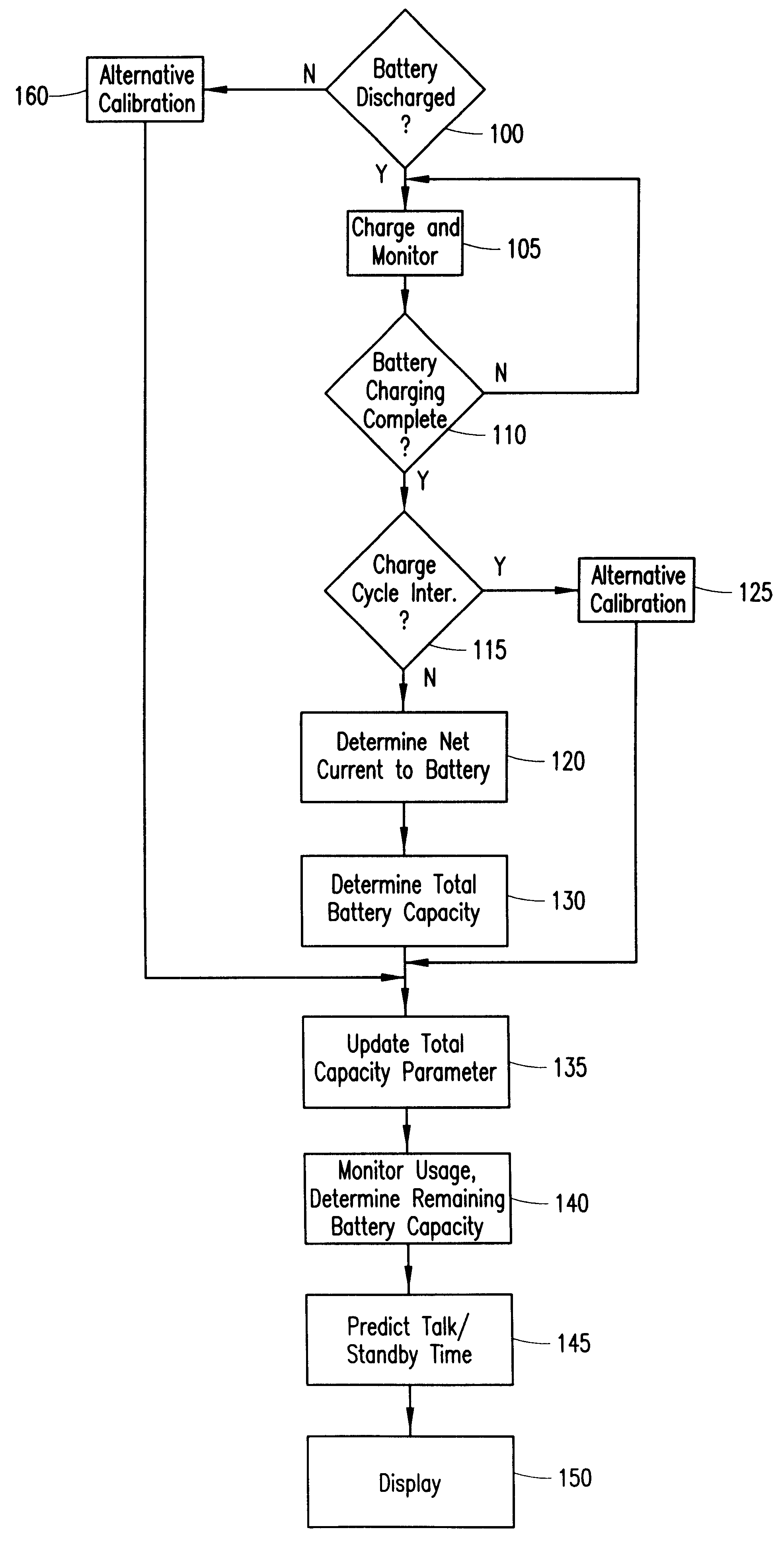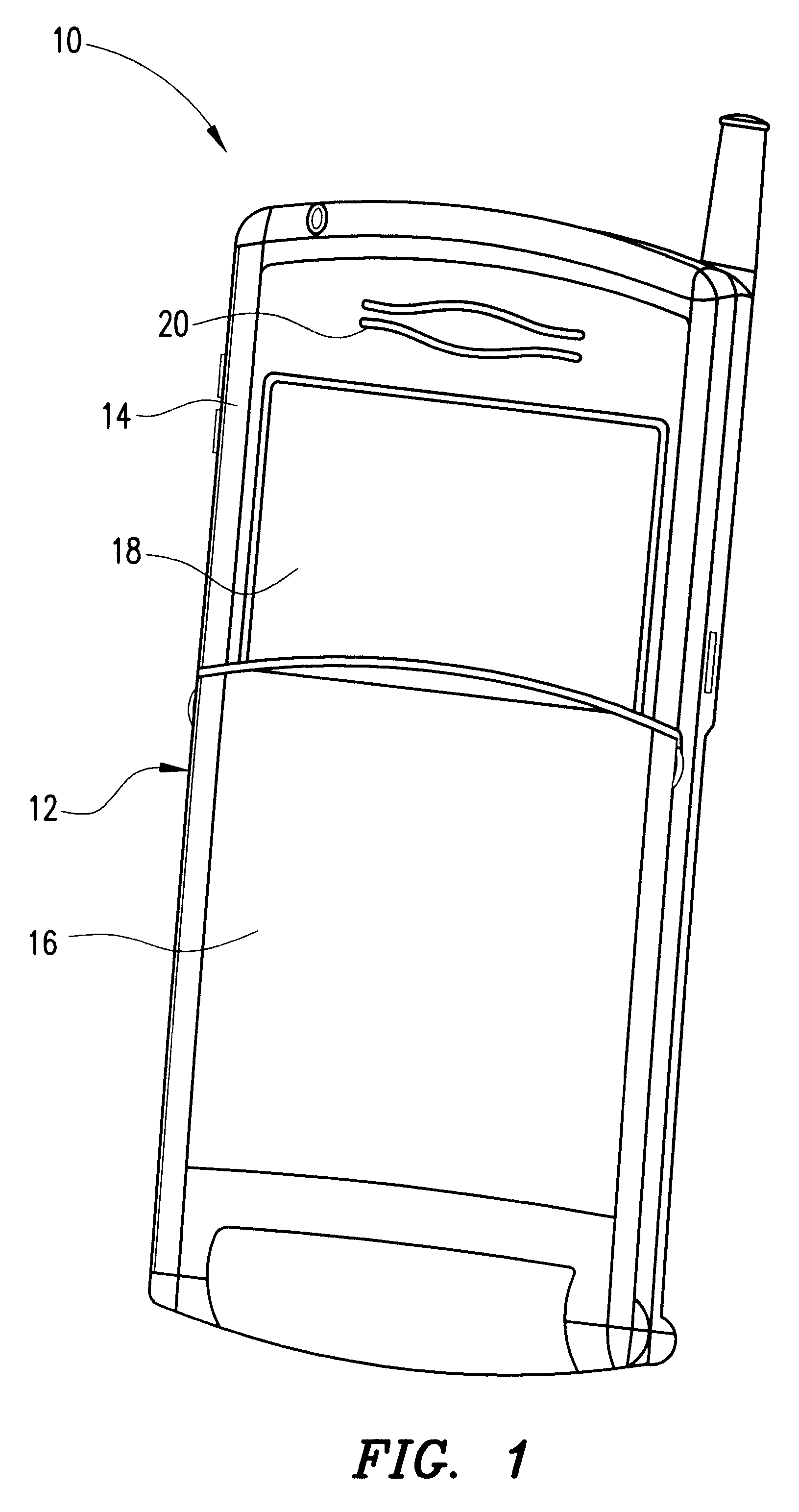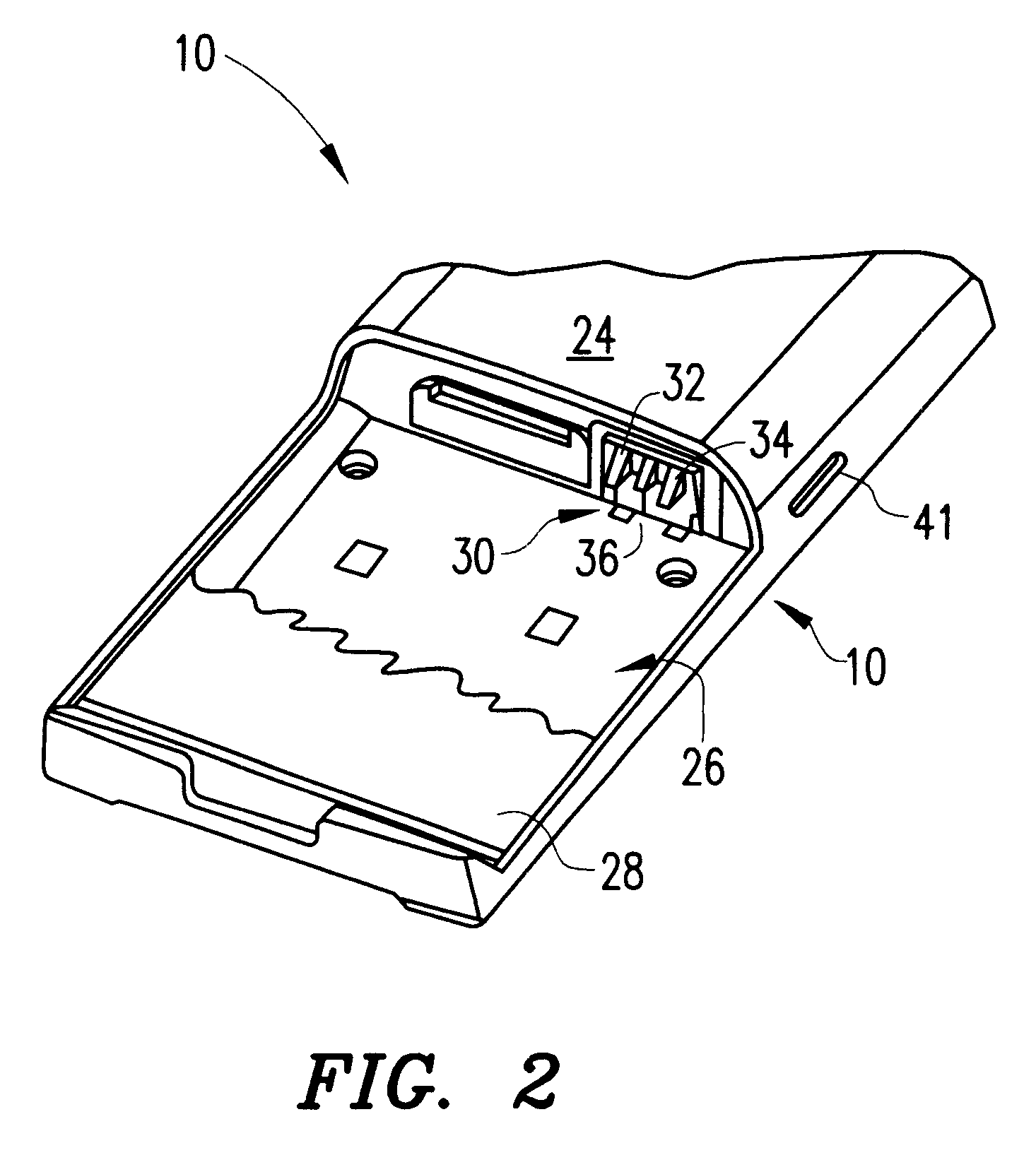Method and apparatus for calibrating a rechargeable battery
a rechargeable battery and battery technology, applied in secondary cell servicing/maintenance, electrochemical generators, instruments, etc., can solve the problems of inability to accurately calibrate, rough estimate, and inability to accurately measure the accuracy of fuel gauges
- Summary
- Abstract
- Description
- Claims
- Application Information
AI Technical Summary
Benefits of technology
Problems solved by technology
Method used
Image
Examples
Embodiment Construction
FIGS. 1 and 2 are front and rear perspective views, respectively, illustrating a mobile terminal in the form of a handheld mobile telephone used in a cellular telecommunications system. The telephone is generally designated by reference number 10; and includes a main housing 12 having a front surface 14 which provides access to a keypad (behind a cover 16 and, therefore, not shown), a display 18 and a speaker 20.
As best shown in FIG. 2, a rear surface 24 of housing 12 has a cavity 26 in which a battery 28 (only a portion of which is illustrated in FIG. 2) is adapted to be positioned. An interface 30 in the cavity, which includes three terminals 32, 34, and 36 in the illustrated telephone to permit the phone to be used with and to identify different types of batteries, is provided to electrically couple the battery and the telephone as is known to those skilled in the art.
The battery 28 can be of various types and constructions as is also known to those skilled in the art. Frequently...
PUM
| Property | Measurement | Unit |
|---|---|---|
| battery current | aaaaa | aaaaa |
| time | aaaaa | aaaaa |
| current | aaaaa | aaaaa |
Abstract
Description
Claims
Application Information
 Login to View More
Login to View More - R&D
- Intellectual Property
- Life Sciences
- Materials
- Tech Scout
- Unparalleled Data Quality
- Higher Quality Content
- 60% Fewer Hallucinations
Browse by: Latest US Patents, China's latest patents, Technical Efficacy Thesaurus, Application Domain, Technology Topic, Popular Technical Reports.
© 2025 PatSnap. All rights reserved.Legal|Privacy policy|Modern Slavery Act Transparency Statement|Sitemap|About US| Contact US: help@patsnap.com



